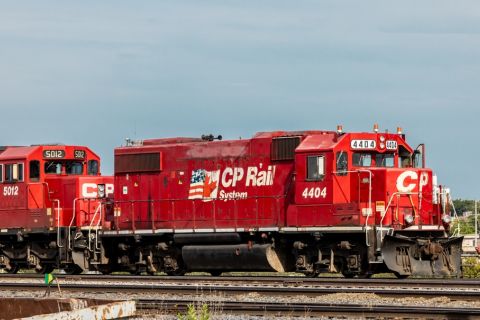From Alaminos Canyon through Walker Ridge stretches a trend that is the very frontier of the Gulf of Mexico. Here, at the razor's edge of exploration, several major discoveries have opened a provocative new hydrocarbon province. One end of the play is anchored by Unocal's Trident and Tobago and Shell's Great White discoveries; the other side is the home of BHP Billiton's Chinook and Cascade, Unocal's St. Malo and ChevronTexaco's Jack landmark discoveries. This is ultradeep water, the domain of the big boys. Drilling costs can be $50- to $80 million for a subsalt well; the reservoir targets are 18,000 to 30,000 feet beneath the sea floor and the prospects lie in water depths of up to 10,000 feet. Below these great water depths lie foldbelts that are home to gigantic salt-cored structures. Some of these features were known for years, but many others were obscured beneath the Gulf's thick salt canopy. As long-offset seismic shoots and sophisticated subsalt imaging techniques improved, the pictures of these enticing structures gradually became clearer. But, even with adequate subsurface resolution, the risks were colossal. Many prospectors doubted that sands would be present at all in these areas, which were quite distal from sediment sources. The issues of adequate seals and oil migrations at the correct times were also looming concerns. Too, drilling engineers were just developing the technologies to grapple with such extreme water depths. But, explorers pushed ahead and discoveries of very thick, oil-prone, Lower Tertiary turbidites with respectable reservoir properties began to be made in the Alaminos Canyon area. That was followed by major finds in Walker Ridge, and interest has correspondingly surged. The Lower Tertiary has both international dimensions and international timetables: estimated recoverable reserves are up to half a billion barrels of oil equivalent (BOE) per field, and the Paleogene reservoirs in the trend could contain billions of barrels of oil. Still, the industry is several years away from bringing any of these Lower Tertiary finds onstream. Perdido foldbelt Paleogene reservoirs were first found to be productive in the Perdido foldbelt, a structural province that lies in ultradeep waters in the southern half of Alaminos Canyon. In this area, a swarm of northeast-southwest trending folds runs from Mexican waters into U.S. territory. Initially, the targets were structures that lay outside of salt and could be seen more easily with seismic. The first well that looked at the Lower Tertiary section was Shell's Baha-2, a test of a large four-way closure that was drilled on AC 557. The well was not successful, but it did encounter thick Lower Tertiary turbidites, and the sands contained some residual oil. Unocal's 2002 Trident wildcat was the groundbreaking well that discovered commercial quantities of oil. A test of a low-relief, four-way closure, the exploratory well was drilled on AC 903 in 9,687 feet of water. The Trident discovery reached a measured depth of 20,500 feet and encountered more than 300 net feet of oil pay in the Paleocene. It conclusively proved that the petroleum system was viable. Since then, Unocal has drilled two successful appraisal wells at Trident. At present, it estimates gross resources at between 100- and 200 million BOE. Next, Shell tested its Great White prospect at a location some eight miles west of Trident. Drilled on AC Block 857 in 8,000 feet of water, the aptly named Great White is a huge, complexly faulted anticline. The discovery well reached a total depth of 19,907 feet and encountered three pay intervals in Lower Tertiary turbidites. Great White is estimated to contain resources as large as half a billion BOE. The finds that followed Great White were not so stunning, however. Tobago, operated by Unocal, was drilled in AC 859 to a total depth of 18,510 feet. It saw about 50 net feet of oil pay and contains estimated resources of 50- to 100 million BOE. Meanwhile, ChevronTexaco's Tiger, drilled in AC 818, and Toledo, in AC 951, both encountered oil, and are estimated to contain resources in the range of 40 million BOE each. The major's SilverTip prospect, on Block 815, has been drilled and is an apparent discovery, but results have not yet been released. Currently, BP is drilling near 20,990 feet at its Diamondback project in AC Block 739, which is a subsalt test. Upcoming projects in the area include Halley, in AC 902 and Leopard, in AC 691. In a recent investor presentation in Vail, Colorado, Unocal chairman and chief executive officer Chuck Williamson said the company will not drill on its Trident and Tobago discoveries this year "because we are in commercial discussions with the other large operator out there, Shell, and others, to see how to commercialize that whole western fold belt." (At press time, ChevronTexaco announced a bid to buy Unocal, citing its Gulf assets as one reason.) Mississippi Fan foldbelt Momentum has now shifted 300 miles to the east, to Walker Ridge and the Mississippi Fan foldbelt, another ultradeep structural province The Chinook prospect, drilled by BHP Billiton in WR 425 in early 2001, encountered promising shows but was a commercial disappointment. BHP's next well on its Cascade project cracked the trend open. Cascade was a Miocene test of a large, salt-cored structure on the edge of the salt canopy in WR 206 in some 8,200 feet of water. The primary objective was wet, so the well was drilled deeper to 27,929 feet. It encountered more than 450 feet of net pay in Eocene and Paleocene sediments. On the heels of Cascade, BHP drilled a second wildcat on its Chinook prospect in WR 469 and made a sizeable find. It encountered 260 feet of net oil pay and a 620-foot oil column. Cascade is estimated to contain gross resources of more than 200 million BOE; Chinook could be as large as 500 million BOE. In late 2003, the industry's eyes were snapped open by Unocal's St. Malo discovery. The subsalt St. Malo well, drilled in 6,900 feet of water, encountered 450 feet of net pay in a 1,400-foot oil column. An appraisal well drilled east of the discovery hit 400 feet of net pay in a deeper interval. Resource potential has been estimated between 250 million and a billion BOE. This year, Unocal plans a third well on the western flank of the feature. "What we want to do is try to bring St. Malo to a commercial state. We will drill a well, so we can come back and do a long-term flow test on it," said Williamson. "We are trying to drive towards commercialization." The next Walker Ridge discovery was made some 20 miles west of St. Malo at ChevronTexaco's Jack prospect, in WR 759. This subsalt well was drilled in 6,965 feet of water to a total depth of 29,000 feet and it encountered 350 feet of net pay. The most recent Lower Tertiary discovery appears to be BP's Das Bump prospect in WR 724, located a few miles southeast of St. Malo. At press time it was still a tight hole. The major's prospect is a large structure that continues onto neighboring Block 723. Unocal holds that acreage, which contains the La Jolla prospect. "Just in the St. Malo/La Jolla/Das Bump area you could aggregate many hundreds of millions of barrels in a very small area," notes Steve Enger, Denver-based director of research for Petrie, Parkman & Co., and author of a recent research report on the Lower Tertiary play. Devon Energy Corp. has a sizeable position in Walker Ridge. The company has a 25% interest in Cascade, a 22.5% interest in St. Malo and a 25% interest in Jack. It is also active, though not to such a large degree, in the Perdido play. There, it holds a 12.75% interest in Trident and an interest in Toledo. Many of the remaining Lower Tertiary prospects will likely be subsalt, which can be tricky to image, says William Van Wie, vice president and general manager of Devon's Gulf division. "The correct imaging on some of these structures is critical." Variability of the top and base of salt can throw a wrench into seismic interpretations, and tremendous amounts of time and effort can be expended to produce a satisfactory depth image. This year, three major appraisal wells will be drilled in Walker Ridge. Unocal plans a 28,500-foot test at St. Malo; ChevronTexaco has a 29,000-foot well proposed at Jack; and BHP Billiton is already drilling one at Cascade. That test is projected to 29,500 feet and a sidetrack could also be drilled. Exploration is ongoing as well. In WR 508, about 25 miles southwest of Cascade, BP is drilling its Stones prospect in 9,556 feet of water. Furthermore, several tests are being considered just north of Walker Ridge in southeastern Green Canyon, in the western Atwater foldbelt. A number of Miocene producing fields are going to be investigated for deeper potential. BP and its partners Unocal and BHP Billiton have just drilled a successful Miocene appraisal well at Mad Dog Field. Later in the year, BP will come back and test the Paleogene beneath the existing reservoir at Mad Dog, said Williamson. Unocal had tried to drill a deep test there last year, but couldn't get it down due to mechanical problems. Mad Dog Field, located on GC 782, started producing in January and is currently making about 30,000 barrels of oil per day from two wells. Another Lower Tertiary test is possible at Shenzi, in GC 653. BHP Billiton operates that project and its partners are Amerada Hess and BP. Moreover, a Lower Tertiary test is being talked about for Anadarko Petroleum's K-2 Field, in GC 562. Middle of the trend Between the Walker Ridge discoveries and those at Alaminos Canyon lies a great swath of unknown country. With the presence of hydrocarbon-filled reservoirs on both ends of the trend, explorers are beginning to poke holes in the middle. Unocal's Sardinia wildcat was a test of this region, drilled to 27,575 feet in 6,345 feet of water in Keathley Canyon 681. The well encountered 1,100 feet of porous sandstones and had some hydrocarbon shows. Devon, Spinnaker Exploration and Total SA were partners in the project. "We found some very interesting, thick reservoir and some indication of hydrocarbon," said Williamson. Enger says, "Obviously the key is finding the combination of a pile of sand and a trap that hasn't been breached. There are lots of big structures out there." Unocal is still high on Keathley Canyon, although it doesn't plan any wells there this year. Williamson said, "We very much like our position out in Keathley Canyon...we will still be coming back to that after we have digested some of the work to the east and the oil results from Sardinia." Devon does not plan any exploratory wells there this year either, but it is preparing several prospects in Keathley Canyon and Walker Ridge. Van Wie says, "We'd like to operate a Lower Tertiary test, but the final depth migrations dictate when the wells are internally ready to drill. Rig availability is also an issue." ExxonMobil recently drilled a test at its Hadrian prospect in KC 919. That well, in 7,316 feet of water, reached a total depth of 27,975 feet and is still a tight hole. Deep shelf A couple of intriguing Lower Tertiary tests are also in progress in the shallow waters of the Gulf of Mexico Shelf. In February, ExxonMobil started drilling its West Blackbeard prospect on South Timbalier 168. The well, which is expected to take a year to drill, is scheduled to 32,000 feet and possibly deeper. ExxonMobil's partners in the $100-million project are Newfield Exploration, BP, Petrobras, Dominion Exploration & Production and BHP Billiton. Moreover, Shell is currently drilling a 24,000-foot well on its Joseph prospect offshore East Texas, on High Island Block 10L. Devon Energy has an interest in the project: "This will be the first Lower Tertiary test on the Shelf," says Van Wie. "We're getting close on that objective." Looking ahead Results in the Walker Ridge and Alaminos Canyon areas have been very good. "Success rates have been running well above 50%, which is pretty spectacular for any play, much less one in a real frontier area," says Enger. "This could be the next big thing- it is too early to declare victory, but all the signs are very encouraging." Nonetheless, the Lower Tertiary reservoirs have lower porosities and permeabilities than the Miocene and Plio-Pleistocene reservoirs that have worked so well in other parts of the Gulf. While the older reservoirs are less than spectacular, the structures are indeed astonishing. "The offset to the lower-quality reservoirs is the enormous size of the structures. The oil in place is phenomenal," says Enger. Van Wie says, "What we've seen is that some of these structures cover two to four offshore blocks, with a mean size between 5,000 and 10,000 acres. We're anxious to get the delineation wells down. Our modeling indicates that these rocks will flow commercially, but we don't have an analogy for them in the Gulf. We want to make sure that we size the development appropriately, and for that we may need to run some flow tests.
Recommended Reading
CorEnergy Infrastructure to Reorganize in Pre-packaged Bankruptcy
2024-02-26 - CorEnergy, coming off a January sale of its MoGas and Omega pipeline and gathering systems, filed for bankruptcy protect after reaching an agreement with most of its debtors.
NGL Growth Leads Enterprise Product Partners to Strong Fourth Quarter
2024-02-02 - Enterprise Product Partners executives are still waiting to receive final federal approval to go ahead with the company’s Sea Port Terminal Project.
After Megamerger, Canadian Pacific Kansas City Rail Ends 2023 on High
2024-02-02 - After the historic merger of two railways in April, revenues reached CA$3.8B for fourth-quarter 2023.
Enbridge Advances Expansion of Permian’s Gray Oak Pipeline
2024-02-13 - In its fourth-quarter earnings call, Enbridge also said the Mainline pipeline system tolling agreement is awaiting regulatory approval from a Canadian regulatory agency.
Canadian Natural Resources Boosting Production in Oil Sands
2024-03-04 - Canadian Natural Resources will increase its quarterly dividend following record production volumes in the quarter.





